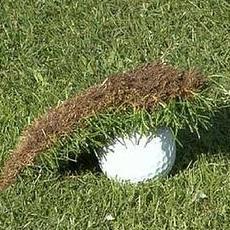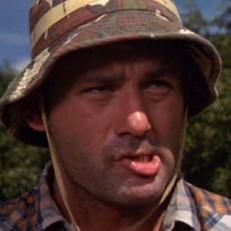Winter Blues
Just as it does for most golfers, winter brings about a lot of free time when golf is not an option. Sure, there’s practice, simulators and launch monitors, but for me, limited practice is about the only golf I see from December to April.
I should be spending all that extra time going to the gym, or investing in some decent boots and bindings so that I can get back into X-country skiing. But I haven’t done those things.
So I find myself looking for projects in hopes of carrying me through to when the courses open.
A few years ago, I bought a few books and re-learned how to sight read music for the guitar. I then bought a cheap second-hand bass and started recorded songs using the GarageBand app. I have a brother down in Florida who, unlike me, is a skilled guitarist. We collaborated on a couple of songs and it became a very fulfilling hobby. I don't do lyrics so the song titles came from Urban Dictionary terms. I figured if “Steely Dan” can become a household name for a band, Paddling the Pink Canoe, Wisconsin Bubbler, and Chinese Lantern would serve as song titles. This activity lasted a couple of years and I’ve yet to get back into it with as much ambition. Even the most enjoyable activities seem to pale in comparison to golf.
Last year, I downloaded a 3D drawing application and became just knowledgable enough to draw some relatively simple objects — a case that holds my calipers, a prototype part design for a co-worker’s presentation at my company and a golf club head that I never completed.
Again, once golf season started no other hobby could hold my interest.
This winter I decided to learn about what many might consider an extremely boring subject – Lean Six Sigma. I chose the “Green Belt” certification.
While never having been the sharpest tool in the shed, I’ve always enjoyed math. That said, I never took any sort of advanced math in school. Relatively speaking, statistics are not easy, IMO. Some of the formulas and concepts can be what I’d consider advanced and when charts or graphs are posted here at TST, they can sometimes be difficult for me to understand. Needless to say, this course would be a decent challenge.
I finished the course this week and scored very high on the exam. As it turns out, there wasn't the need to learn a lot of the complex formulas because Excel, Google Sheets and online calculators can do a lot of that heavy lifting.
After finishing the course, I was struck by a couple of things.
First, these tools and methods have a substantial impact on improving a process. They can settle a lot pissing contests at an organization as they offer fact-based and statistical information instead of memory and an opinion or sense of what’s going on (feel ain't real).
Secondly, Erik and Dave must have used some of this when writing Lowest Score Wins. Separation Value or “SV” and “SCOR” (which help defines SV) reminds me of Risk Priority Number in Six Sigma which assigns a value to a problem based on severity, occurrence and detection. Practicing with a purpose and working on a priority ties into this as well. (I have to admit to using some of the concepts of LSW when writing "how to" guides at work, simply because their approach is so logical.)
In another month or two, the weather will clear and the field behind my house will thaw. The Six Sigma course will be a memory. I’ll collect all the lost golf balls and start my spring practice. This year brings a different approach to what I’ve tried in the past. Repeatedly doing the same thing and expecting a different result is nuts as they say. So instead of improving my indoor swing, I want to figure out how to take it — however bad it is — outside. I’ll evaluate the results using ball flight. If the results are as good as they feel hitting into the net, I’ll try like hell to make that the swing I use at the course instead of reverting back – as I always seem to do – to a poorer swing that just seems more natural.
Maybe I’ll gather some data…create some control charts to evaluate how I perform the keys and the ball flight results... establish a mean and standard deviation. I’ll create a linear regression model to see if there’s any correlation or significance between certain keys, consistency of how well I execute those keys, and the resulting ball flight. These all seem like good ideas when I have all the time in the world.
Or, I could just enjoy hitting golf balls outside again, keep track of my scores, and be glad I'm not stuck in front of my computer all the time.









0 Comments
Recommended Comments
There are no comments to display.
Create an account or sign in to comment
You need to be a member in order to leave a comment
Create an account
Sign up for a new account in our community. It's easy!
Register a new accountSign in
Already have an account? Sign in here.
Sign In Now